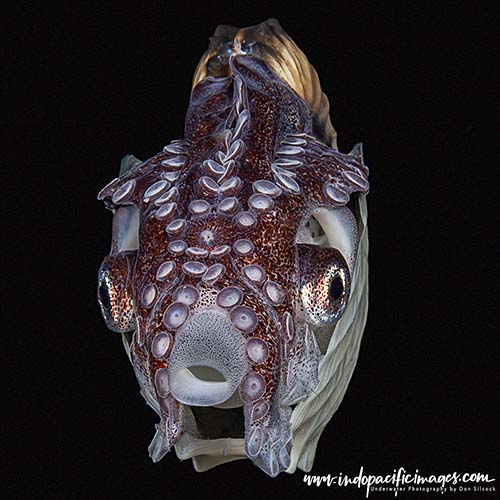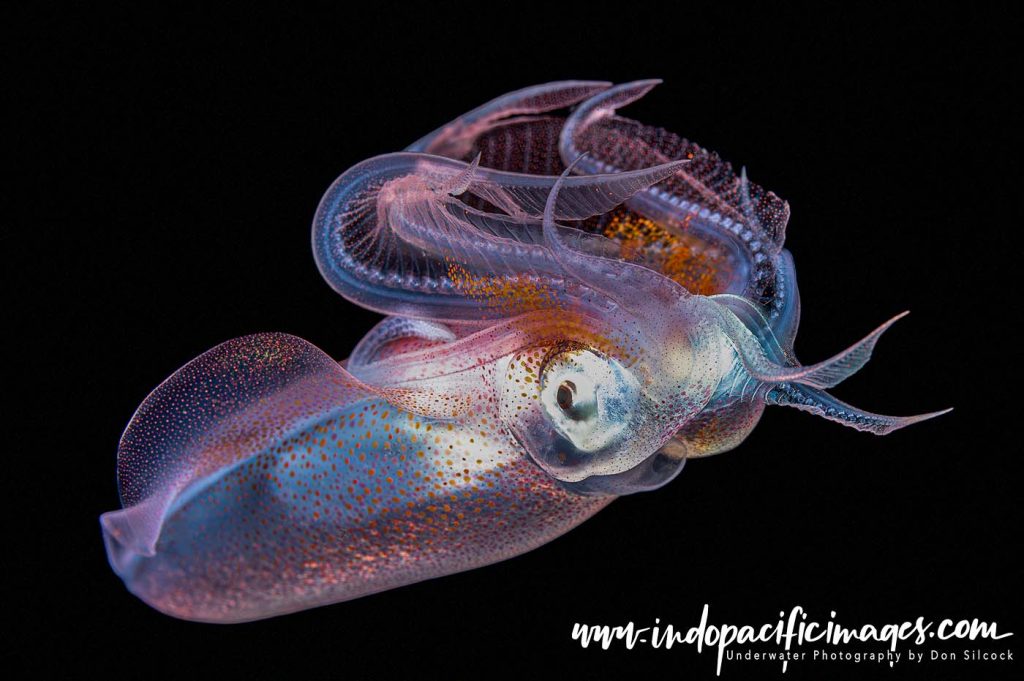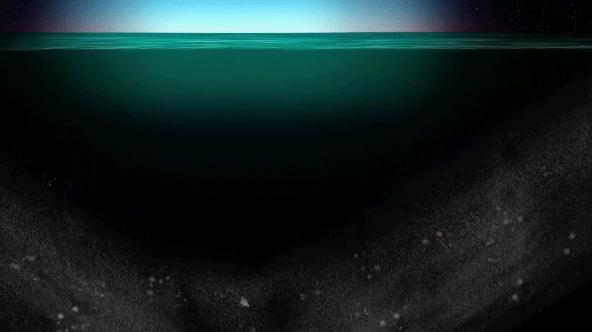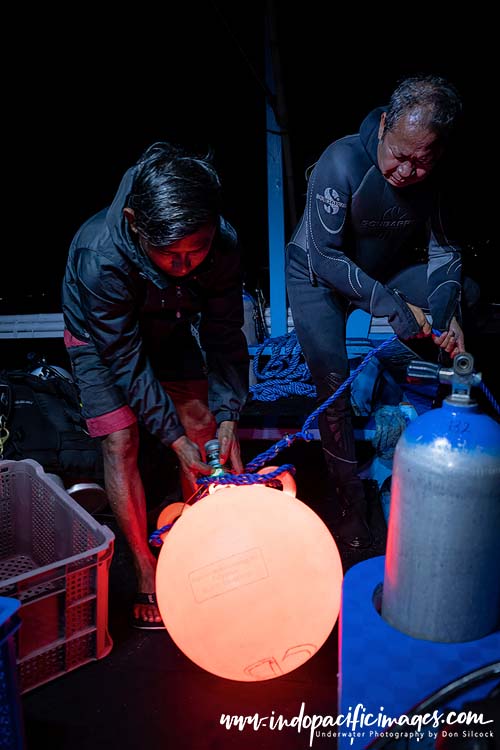
Getting into Blackwater Diving… The images are what first grab your attention! Seemingly alien creatures floating in the dark of night, long after most people have called it a day.
These strange forms, illuminated by light against the blackness of open ocean, seem otherworldly. What are they? Why are they there? And what exactly is blackwater diving?
After hearing countless stories and talking with divers I trust, it became clear that I just had to experience it for myself.
So, at the end of January, I boarded a Qantas flight to Manila and made my way to Anilao, often described as Southeast Asia’s blackwater diving capital.
What is Blackwater Diving?
Also known as pelagic night diving, blackwater diving is essentially night diving on steroids. Traditional night dives take place in shallow, protected areas close to shore — safe, calm, and familiar.
Blackwater diving, however, happens in the open ocean, far from land, usually over water deeper than 200m. Why go to such places at night? Because that’s where the magic happens. Once the sun disappears below the horizon, the deep ocean comes alive with mysterious creatures rising from the depths. While divers stay within the 15–25 metre zone, the occasional special visitor will tempt a deeper look.
For divers thinking about getting into blackwater diving, understanding how different it is from a regular night dive is the first step.

Getting into Blackwater Diving – Why These Creatures Appear at Night
Part of the fascination of blackwater diving lies in witnessing one of nature’s great hidden events — the diel vertical migration (DVM).
First described in the 19th century by French naturalist Georges Cuvier, this daily movement sees billions of small organisms — from tiny fish and shrimps to jellyfish and larvae — rising from the depths to feed near the surface after dark.
It’s no small phenomenon. In terms of biomass, it’s considered the largest synchronous migration on Earth, happening every night in every ocean. During World War II, the U.S. Navy even detected the dense layer of migrating organisms on sonar and initially mistook it for enemy submarines. This layer became known as the deep scattering layer — the signature of the DVM.
Understanding the Diel Vertical Migration

Each night, as daylight fades, billions of creatures begin their ascent. These animals – mainly zooplankton and the juvenile stages of larger species – travel upwards to feed in the nutrient rich surface waters.
They do so under the cover of darkness, when predators that hunt by sight are less active.
The reasons behind this nightly migration include the interplay of circadian rhythms, temperature, prey abundance, and predation risk. Whatever the drivers, this movement plays a critical role in the balance of marine life.
As dawn breaks, the same creatures descend once more to the depths, creating a continuous, global pulse that connects surface and deep-sea ecosystems.
Nature’s Carbon Pump
Fueling this entire cycle is phytoplankton, the “plants” of the plankton world. These microscopic organisms thrive near the surface, using sunlight to photosynthesise – converting carbon dioxide into glucose and oxygen.
Collectively, phytoplankton absorb as much carbon dioxide and release as much oxygen as all the plants and trees on land combined.
When zooplankton consume phytoplankton, they also ingest that absorbed carbon. Each morning, as they return to deeper water, they release waste that helps lock carbon away on the ocean floor – a crucial process scientists describe as nature’s carbon pump.
This incredible system of life and recycling is the unseen engine that powers blackwater diving’s nightly spectacle.
How Blackwater Diving Works

There are several approaches to blackwater diving. The original method, pioneered in Kona, Hawaii, involves a lighted downline suspended beneath the boat.
Divers are tethered to this line, with video lights drawing in the creatures.
While effective, it restricts your movement and requires careful coordination to avoid tangling with other divers.
A second method, called the “bonfire dive,” takes place in shallower water with a strong light placed on the seabed and shining upward.
The third, and the one I experienced in Anilao, was developed by Mike Bartick of Crystal Blue Resort Resort (CBR) and is an innovative system that allows more freedom.
At its core is the “pumpkin,” a bright orange buoy supporting a 25-metre weighted downline equipped with powerful video lights every five metres.
The pumpkin drifts naturally with the current, while divers follow beneath it, illuminated by the light trail.
The surface crew keeps a safe distance, tracking the pumpkin’s glow as divers move through the dark waters below.
For anyone getting into blackwater diving, this setup provides both safety and mobility — essential for photographing elusive subjects in total darkness.
The First Dive – Facing the Darkness
It starts with a 7 p.m. departure from CBR. After up to an hour’s journey, the engines stop, and darkness settles in. The crew deploys the downline, lights, and pumpkin — and then it’s time to enter the water.

It’s hard to describe what it feels like the first time you get into blackwater diving. Suspended in open water, surrounded by blackness, with only the lights on the downline as a reference, is quite surreal.
You can’t help but imagine what might be lurking in the dark – a mix of curiosity and unease that quickly gives way to fascination once the first tiny creature appears.
Photographing them is no easy feat. They’re small, translucent, and constantly in motion. Each dive lasts around an hour, with divers surfacing near the pumpkin and signaling with a torch before being picked up by the boat.
Initially you can’t see the boat, so hearing the engines as it makes its approach is a very reassuring sound. For safety reasons, divers swim away from the pumpkin to be picked up. After the first dive, there’s a one-hour surface interval before venturing into the darkness once more.
Two dives a night are the norm and it’s not uncommon to return to CBR around 01:00 in the morning. Which is why I think of it all as the Anilao Night Shift…

Getting into Blackwater Diving – Is it Safe?
Blackwater diving pushes close to the limits of recreational diving, so it’s not something to attempt with a casual operator.
Only dive with experienced professionals who have the right crew and equipment. You should be a confident diver with excellent buoyancy control, spatial awareness, and comfort in dark, open water.
During my nine days in Anilao, the first three were spent on day dives before easing into blackwater at night. The initial dives felt strange but never unsafe. By the fourth “night shift,” I was completely hooked — and the unease had turned into pure excitement.
Final Thoughts – Why You Should Try Blackwater Diving
Reflecting on my experience in Anilao, I realise that blackwater diving was an itch I didn’t know I needed to scratch – until I did…
To be precise, it’s the combination of blackwater diving and underwater photography that truly captivated me. The otherworldly subjects, the challenge of shooting in motion, and the calm intensity of drifting through the dark make it utterly unique.
For anyone considering getting into blackwater diving, be prepared to see the ocean in a completely new light. It’s an experience that will redefine your understanding of the underwater world — one glowing creature at a time.
Getting into Blackwater Diving X-Ray Article
The excellent global diving magazine X-Ray just published a seven-page article of mine on Getting into Blackwater Diving and you can use the link to download a copy from their site.

